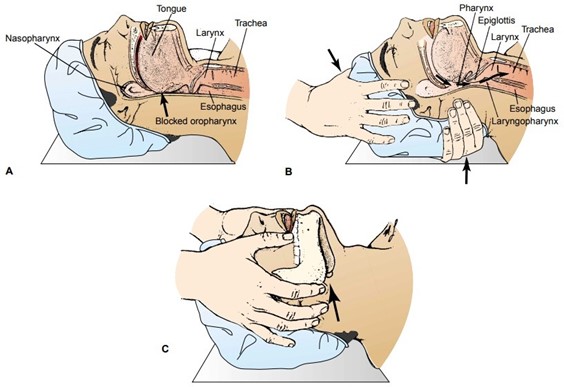A nurse is assisting with the care of a client in a PACU. Provider Prescriptions
1100:
Oxygen 2 to 5 L/min via nasal cannula to maintain oxygen saturation greater than 92%.
Which of the following actions should the nurse take during the management of oxygenation for this client?
Select all that apply.
Place the client in the supine position.
Prepare to administer oxygen via Venturi face mask.
Add a humidifier to the oxygen device.
Encourage the client to perform deep breathing exercises.
Examine the client's nail beds.
Correct Answer : C,D,E
When managing oxygenation for a client in a PACU, the nurse should take several actions. The nurse should add a humidifier to the oxygen device to help prevent dryness of the nasal passages¹. The nurse should also encourage the client to perform deep breathing exercises to promote oxygenation¹. Additionally, the nurse should examine the client's nail beds for signs of cyanosis, which can indicate inadequate oxygenation¹.

Nursing Test Bank
Naxlex Comprehensive Predictor Exams
Related Questions
Correct Answer is D
Explanation
Effective communication with the client is crucial to understand their desires and provide appropriate care. When faced with a language barrier, it is important to use professional interpreter services to ensure accurate and clear communication. By requesting an interpreter, the nurse can obtain a clear understanding of the client's wishes and concerns regarding leaving AMA.
Without clear communication with the client, it is not appropriate to assume that the partner can make decisions on their behalf or sign an AMA form. It is important to directly ascertain the client's wishes.
Discharging the client without understanding their wishes and providing appropriate education or interventions could potentially put the client at risk. It is necessary to have a clear understanding of the client's desires before taking any action.
Asking the partner to reiterate the consequences of leaving AMA to the client: While educating the client and their partner about the consequences of leaving AMA is important, it is not sufficient in this situation. The nurse needs to directly communicate with the client to understand their wishes and concerns.
Correct Answer is D
Explanation
Informed consent is a critical step before any invasive procedure, including an EGD. The nurse should confirm that the client has received the necessary information about the procedure, its risks and benefits, and has given their consent voluntarily. This ensures that the client understands the procedure and its implications, making it an essential part of their rights and safety.
Whether you are a student looking to ace your exams or a practicing nurse seeking to enhance your expertise , our nursing education contents will empower you with the confidence and competence to make a difference in the lives of patients and become a respected leader in the healthcare field.
Visit Naxlex, invest in your future and unlock endless possibilities with our unparalleled nursing education contents today
Report Wrong Answer on the Current Question
Do you disagree with the answer? If yes, what is your expected answer? Explain.
Kindly be descriptive with the issue you are facing.
